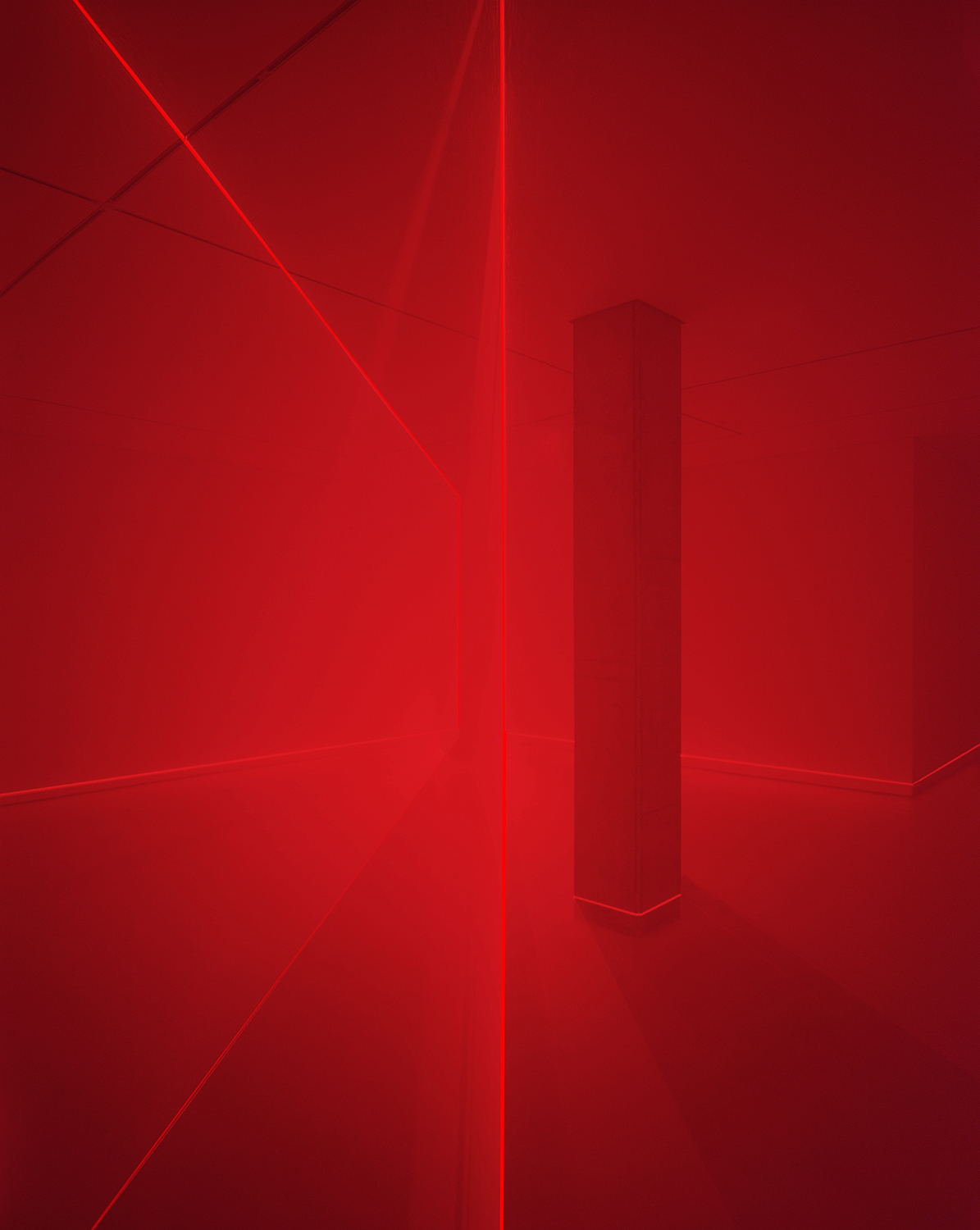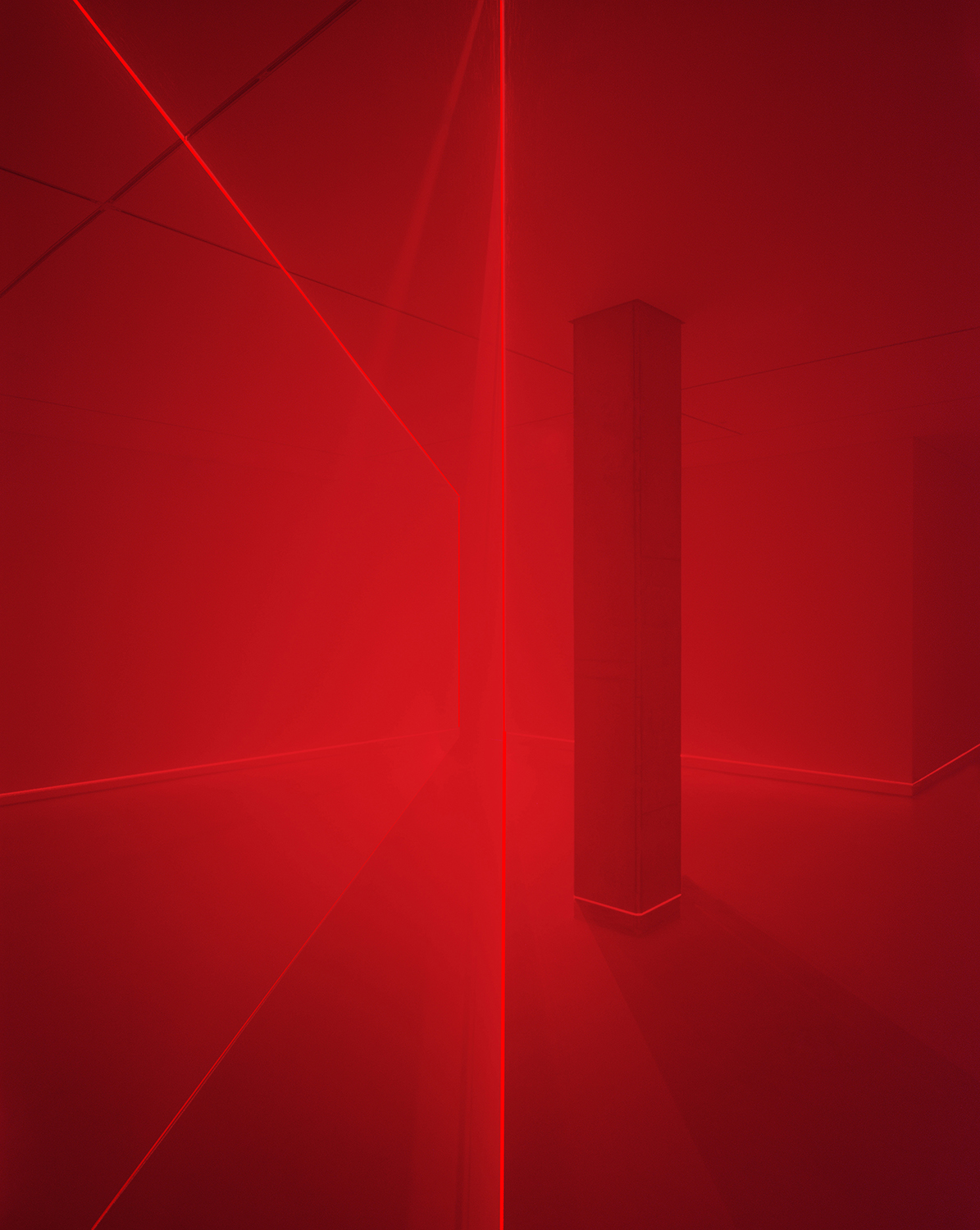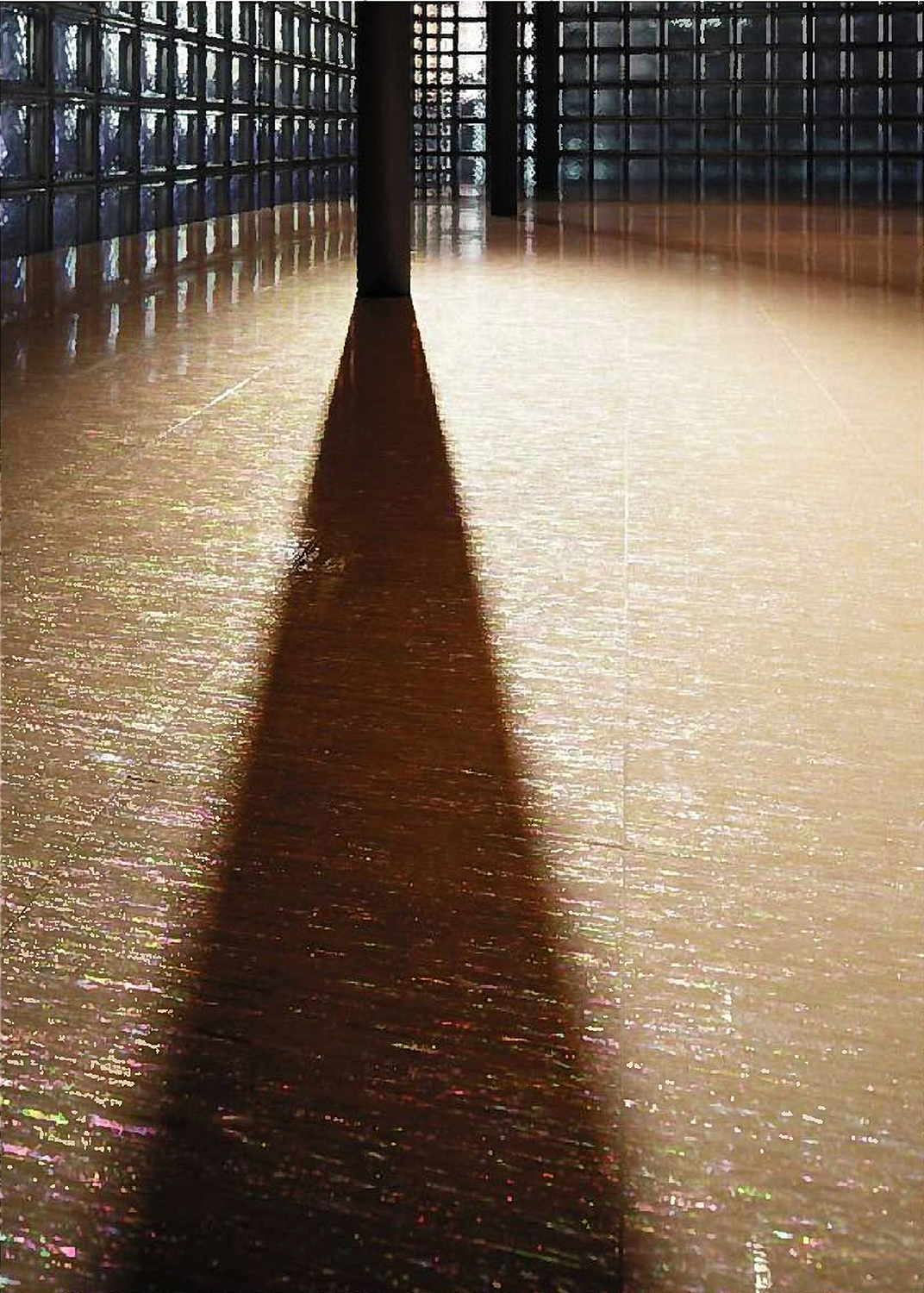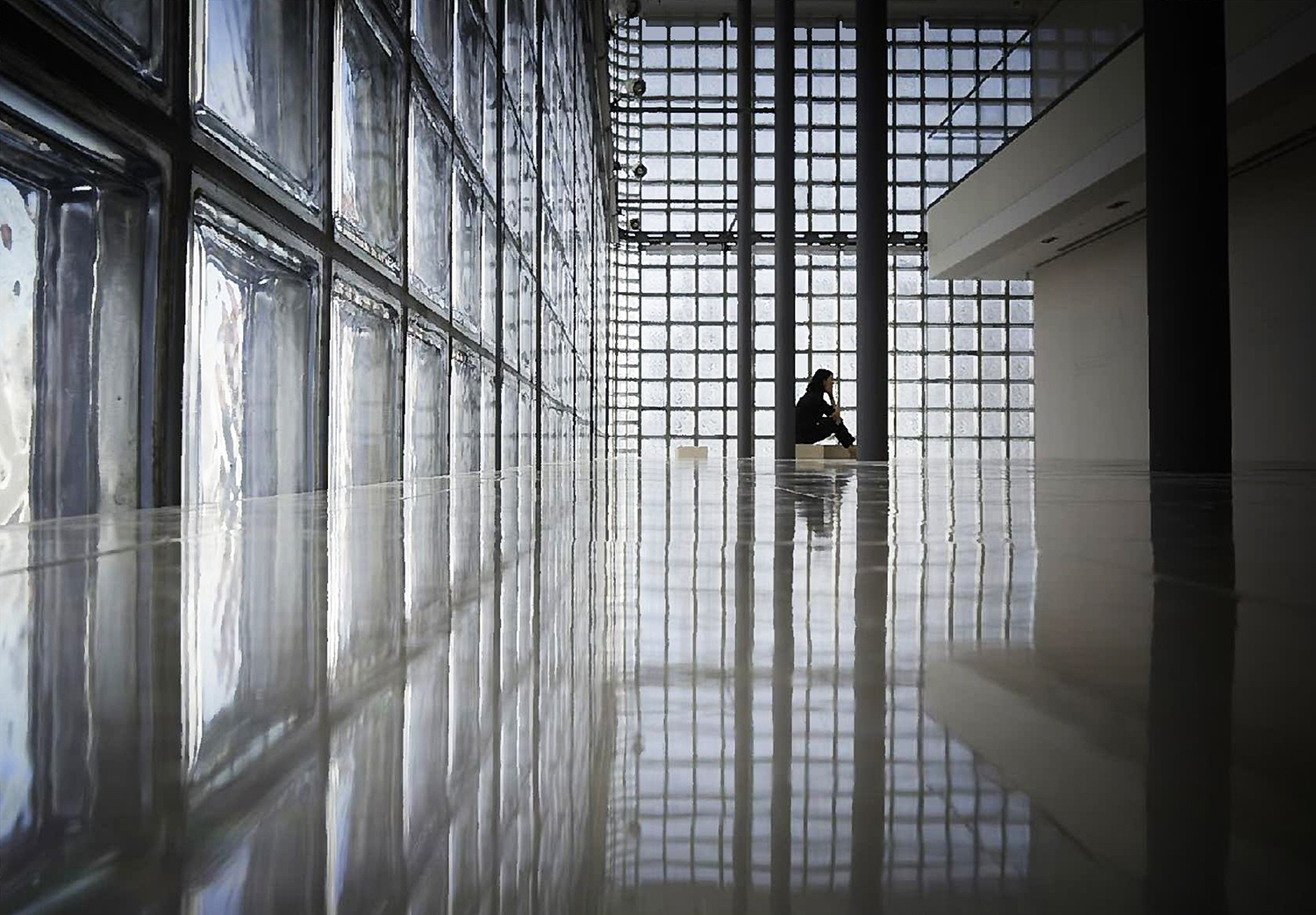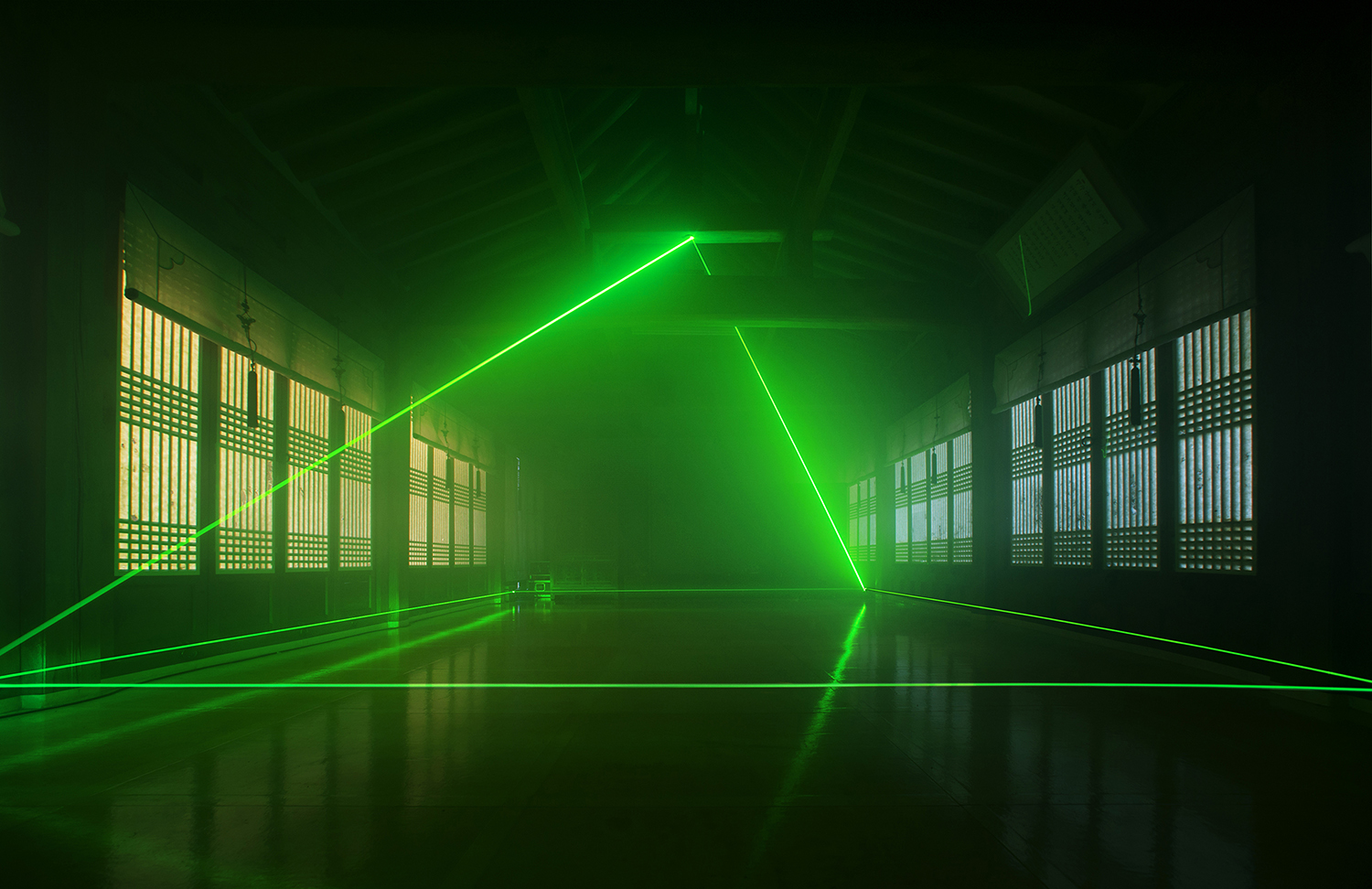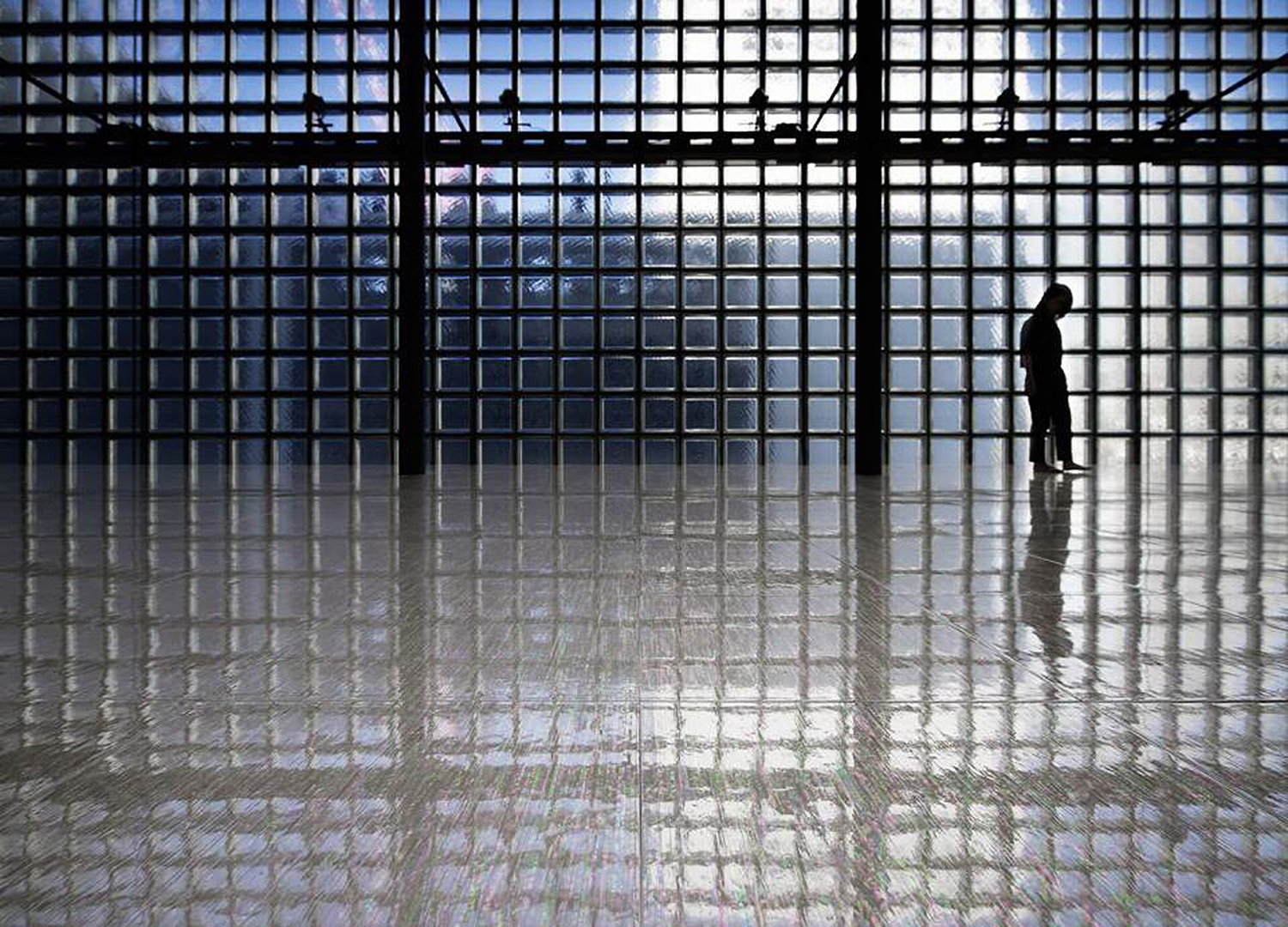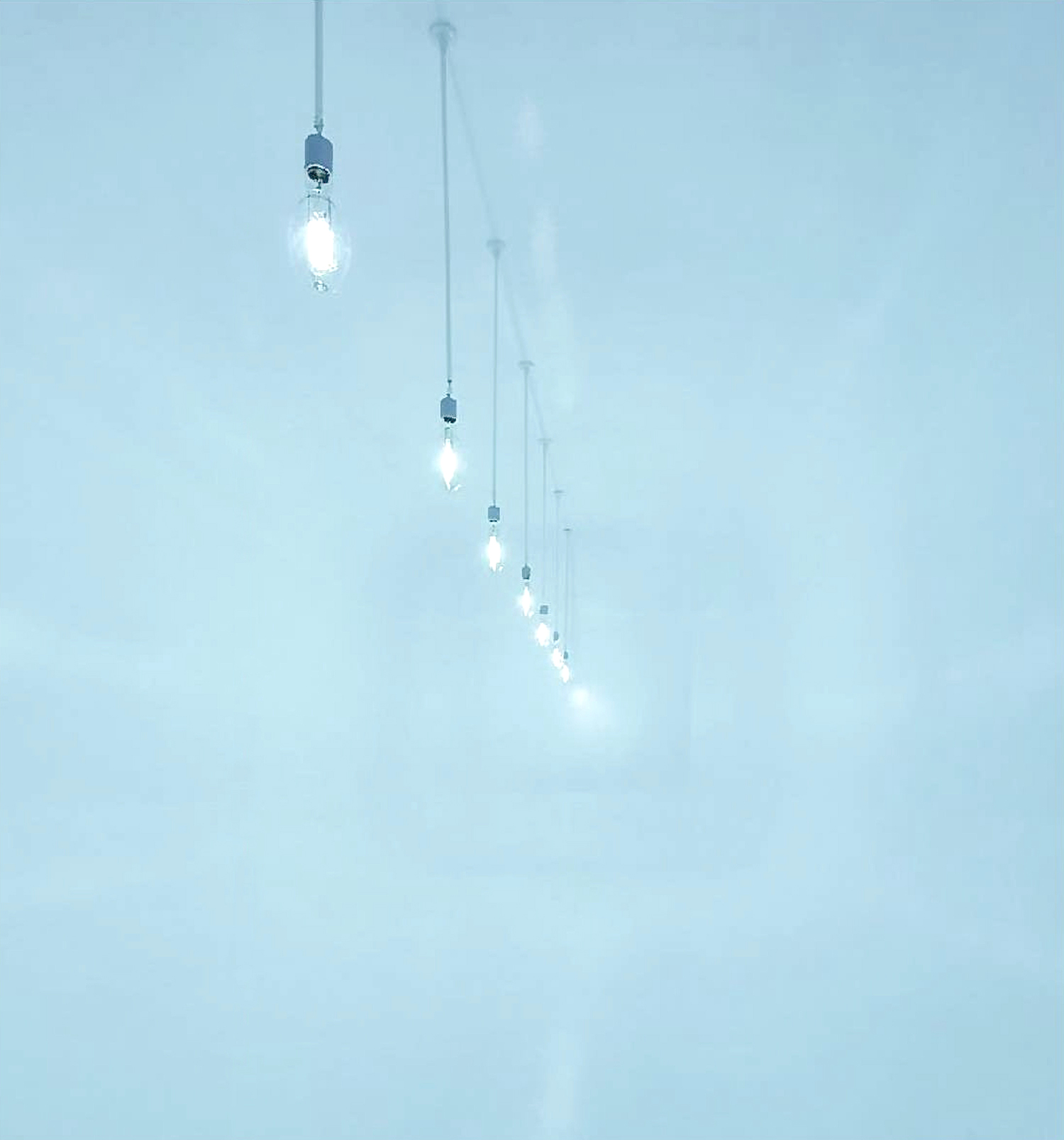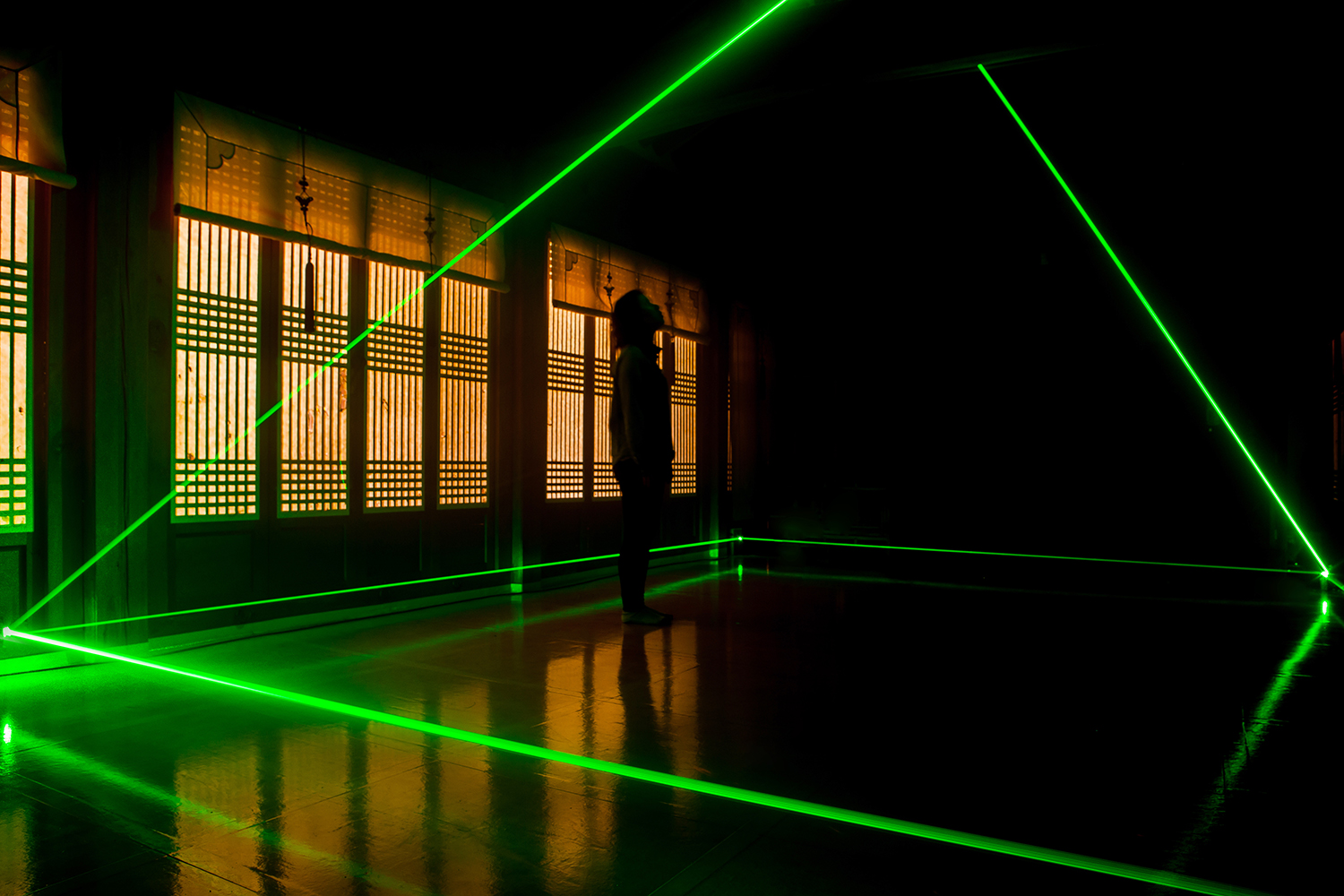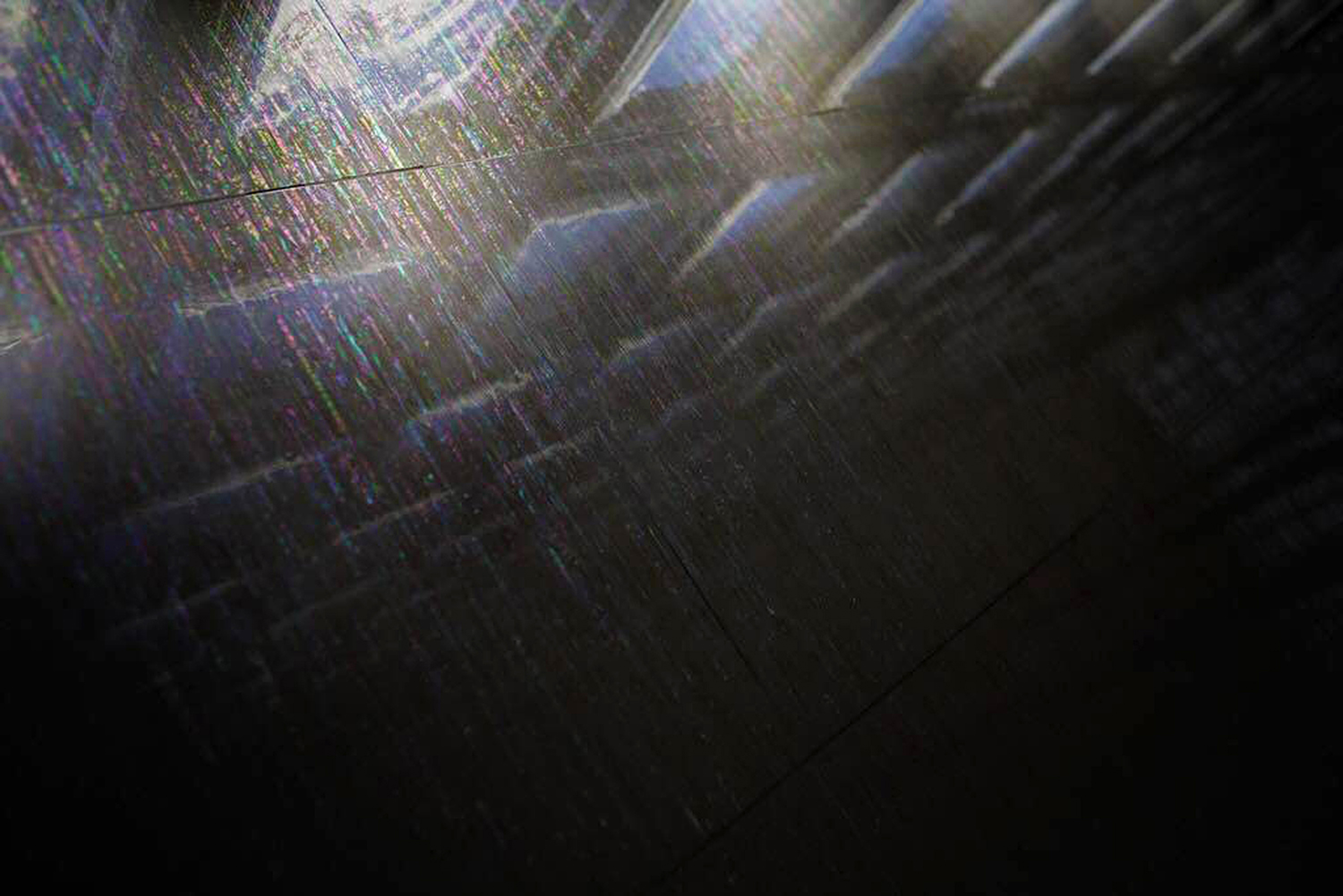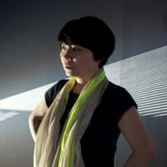
Ligyung , Coreana Museum of Art, Space*C
Birth
1969, Jeonju
Genre
Installation, Photography, Media
Homepage
Ligyung ? more Light
1.
Since the early 2000s, Ligyung’s installationshave shown consistent attention to thought on humanity and society rather thanspectacle and sensuous amusement. Especially for the artist, light has been centralto her art. In this solo show more Lightshe explores relations between outer appearance and existence, phenomenon and existenceand issues of society, environment, and human spirit, presenting light,non-physical form in synesthetic installations.
The exhibition title is a reminder of the meaningof light in Western metaphysics. In Plato’s allegory of the cave, light is therealm of truth and existence, urging prisoners in the cave compelled to gaze ata wall to look outside. The world of light represents existence, source ofshadow and outer appearance, opposite the shadow, in a cave as a phenomenalform or a representation of presentation. The outer appearance, a phenomenalvisual system, is an optical trick produced by shadow, incredible andincomplete in comparison to perfect being represented by light.
Installations Ligyung produced in the early 2000sallude to incompleteness of the phenomenal visual system the allegory of thecave implies, and the imperfection of believing what is seen. The True Knowledge of Good & Evil(2001/2003) blinding viewers with dozens of lamps used in a cuttlefish boat ina closed space with a slanted wall, and Seeingis believing, believing is seeing (2003/2004) with a single ray of light ina dark room with an inclined mirror at an angle of fifteen degrees on a wall,exclude all physical objects except for light. At the moment viewers realizethe spaces in these installations are slanted, and rely on what is seen by theireyes, they become betrayed by what they have so far believed.
He called to man (2005) also representsincompleteness of the phenomenal world and the limit of our eyes, unable to distinguishouter appearance from existence, phenomenon from being, fiction from reality. Inthis work blending real and fake ivy on an object in a pieta form, simulacra(fake ivy) look real. The moment we meet the truth is when the fake ivy eventuallywithers.
In Ligyung’s juvenilia light ousts the dark and maycause blindness. As prisoners endure blindness in the light after leaving thecave, we have to give up sight to understand supreme good, ideas, or existence.Ligyung’s early installations focusing on light urge us to contemplate themeaning of the soul and existence, delaying judgment of things and the world withour imperfect sense of sight.
2.
In her early pieces light was a mechanismrevealing the incompleteness of sight and metaphor for truth and belief, confirmingthe existence of darkness, whereas in moreLight exhibition in 2012, light becomes phenomenal and part of the physicalsense seen and felt here and now. Light can be discussed in a more extendedsocial horizon not only as the gaze internalizing others in the visual system, butalso as an analogy for contemporary humans and invisible social systems.
In moreLight (2012) with the same title with the exhibition a void is filled withminimal, floating light. This installation is an endlessly expanding matrix of spacewhere green light spreads through reflections of light on mirrors on walls andglass piled up in layers. Falling into the bottomless layers of light, viewers canexperience separated perception in infinite space where they cannot fix theireyes. Many focal points are engendered when many rays of light overlap, making oureyes wander. Light is tactile rather than visual in this work.
Viewers can view the light with their eyes, andexperience it with their body. Viewers feel anxiety in a space of tactile lightinfiltrating the body or dispersed by the body. This anxiety is caused by a senseof infinite space making viewers lose stability, experience multiple perceptionswithout a fixed viewpoint, and many gazes beyond their control. As the artistmentions, this bodily anxiety stems from the feeling they cannot define theirposition in society. It is also a metaphor for the divided situationcontemporary people face in a structured social system. The artist internalizessocial systems through light covering or infiltrating through our bodymovement, not through a light source demanding self-reflection.
In the late 2000s her work presenting profoundthought on the ideal and soul showed concrete expansion through social connotation.Paradise Lost(2008) appropriating Hieronymus Bosch’s TheGarden of Earthly Delight reveals a symbol-system of our society byinserting gloomy scenes of our modern history into a space blending good andevil, pleasure and loss, body and soul. While this work was an attempt to graspthe nature of human being and social structures through the appropriation of a Biblicalstory of Adam and Eve, Apppocalypto-AppealPlay (2009) represents a contradiction between existence and phenomenon. Theduality between the exterior circular building showing figures kissing and embracingand the violent interior scene showing a shadow of figures fighting and killingone another is the antonymic paradox of our society. Light illuminating theviolent scene is the invisible eye (gaze) controlling and censoring us,omnipresent in our surroundings, signified in Panopticon Play (2009).
The subject of such ‘seeing’ objectifies andpossesses the object and world as the axis of the gaze, and the act of seeingcombines with power here. This subject of seeing identifies I with the eye, andinternalizes cogito in the dichotomous layers of subject and object, interiorand exterior. As mentioned above, Ligyung’s work since the 2000s carries afundamental skepticism about seeing objectifying the world and object.
3.
I am telling a lie on display at theshow asks viewers to mobilize the tactile sense, stopping such visual viewing.It is impossible to control objects visually in a large, synestheticinstallation filled with red light, smoke, video images and sound: when mistand smoke puff out every 15 minutes into rays of red light, light and smokereact, generating passageways, walls, doors, and membranes. These passagewaysappear when smoke exists but its visual presence becomes vague at the momentsmoke disappears. The coordinates of the place I stand becomes ambiguous; thespace appears vague with smoke, the air of the space seems to be stand stillbut slightly moves; minute membranes appear and disappear here and there, andsound make us lose our balance. Collapsing coordinates of stable space-timedefining my position, this work combines elements of heterogeneity, fluidity,and reversibility.
Another primary element in I am telling a lie is space perceived in discontinuity and thecontinuance of time that viewers experience. Significant is physical experiencenewly perceived through space, time, and light, not physical presence. Theviewer’s body thus becomes a decisive factor in the meaning of the work.Self-sufficient, transcendental presentness is replaced by a theatricalsituation perceived with reliance on space, and a viewer state and presenceaccording to time.
In the installation the light to which the artistlends meaning does not exist in an invisible idea but meets an awareness ofsociety the artist has through concrete physical experience and awareness of theartist herself. In a sense, I am tellinga lie demonstrates the artist’s perspective of herself and society likepieces with social connotations such as Paradise Lost, Appocalypto-AppealPlay, and Panopticon Play beyondher early work based on truth and belief.
Doors and walls generated by red beams of lightand passageways in light and smoke soon disappearing are metaphors for a socialsystem controlling us, invisible yet surely existing. The image of stairs viewersdiscover standing with their back to the light, and images fused with theirbodies are diverse phenomenal worlds reflected onto sight. Stairs here is a ladderof desire intricately existing in the phenomenal world rather than a ladder ofphilosophical ascension we climb after getting rid of emotion and libido.
The light, primary subject matter of Ligyung’s workseems to be at the point of the gaze at the object or when the other looks atme, not the eye of the subject governing the object. This concerns being seen, notseeing. For Jacques Lacan, it is like the sparkling of light reflected on thesurface of a can. This means light sees me rather than I see light. This is thegaze uncontrolled by me; that is, the non-object of desire Lacan claims. InLigyung’s work, passageways and membranes in light are the post light gazes.That is the position of a social system or the other that views us. As thepassageways and membranes become obvious and obscured at the moment light andsmoke fuses, it looks inexistent as it is revealed, but is like a stainemerging unexpectedly.
Ligyung’s work meets our fundamental awareness ofman and society in that it signifies the original deficiency and loss of thesubject in a vague, dim space. Her work is impressive in that it enables ourinsights into society and human beings amid an absence of concrete objects,crossing any context.
Bae Myung-ji(Senior Curator of Coreana Museum of Art)






